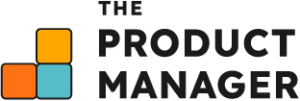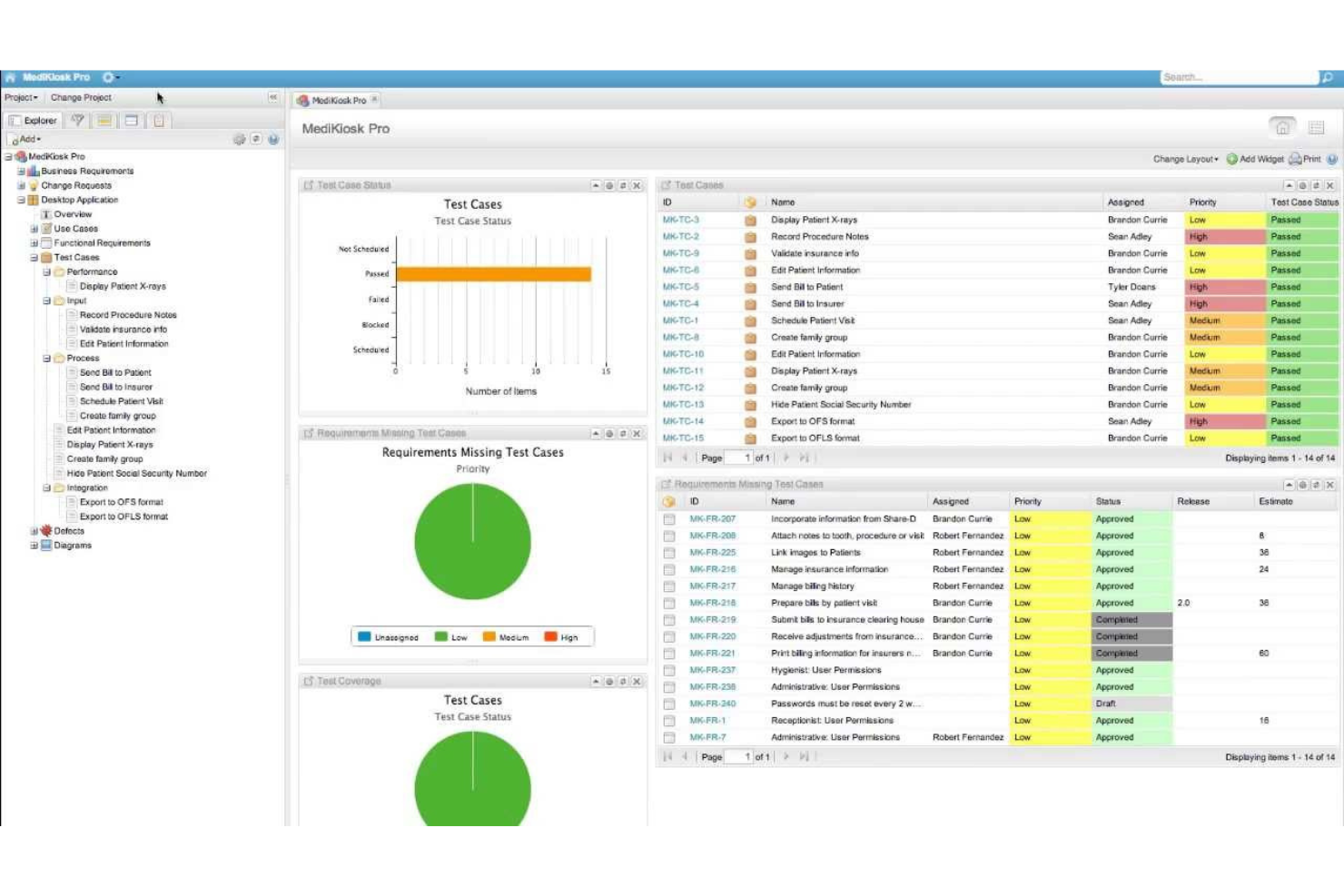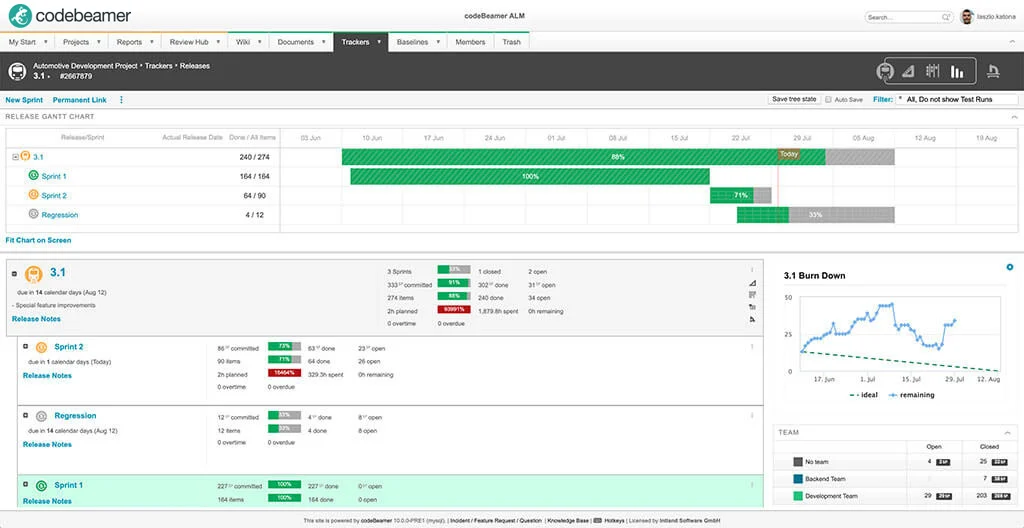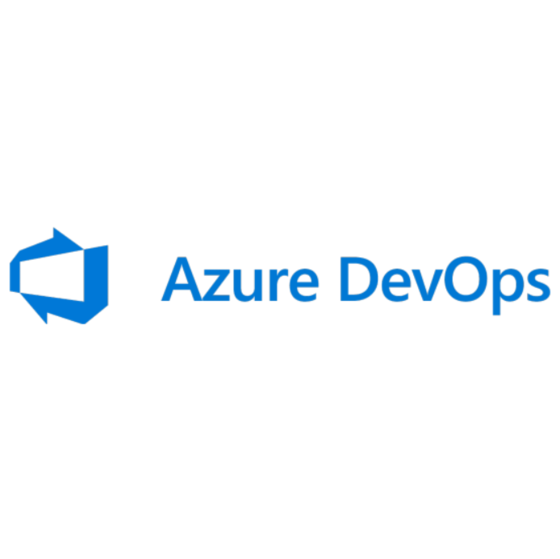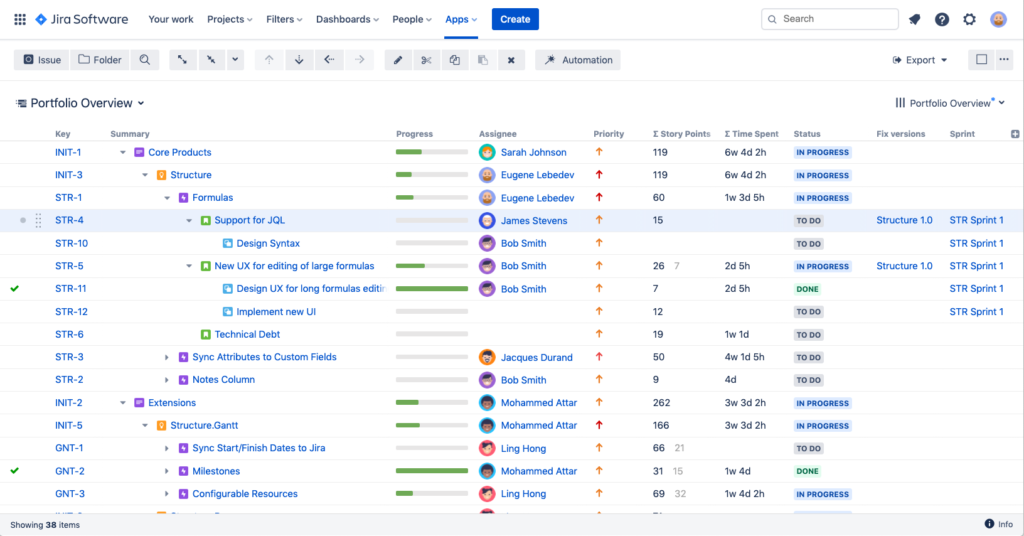10 Best ALM Software Shortlist
Here's my pick of the 10 best software from the 21 tools reviewed.
Our one-on-one guidance will help you find the perfect fit.
There are so many different ALM tools that making a shortlist of the best can be tricky. You want to allow your development teams to maintain visibility, traceability, and control over every phase of the application lifecycle but need the right tool for it. I've got you covered! In this post, I leverage my personal experience managing dozens of product developments and using many different platforms with larger teams to share my picks of the best ALM software.
What is ALM Software?
Application lifecycle management (ALM) software is a comprehensive tool that integrates and manages the processes, tools, and activities involved in the development and maintenance of software applications. It encompasses a wide range of features, including requirements management, version control, project planning, testing and quality assurance, collaboration tools, and reporting and analytics.
Overall, ALM software helps organizations deliver software projects more efficiently by providing a centralized platform for planning, tracking, and managing all aspects of the application lifecycle.
Overviews Of The 10 Best ALM Software Solutions
Here’s a brief description of each ALM system to showcase each tool’s best use case, some noteworthy features, and screenshots to give a snapshot of the user interface.
Jama Software is an award-winning requirements management software that can tailor to any application lifecycle management strategy. They offer industry-specific solutions for medical devices, automotive and semiconductors, aerospace and defense, software development, and industrial manufacturing.
Some key features of Jama Software include end-to-end live traceability of people, data, and processes, along with real-time impact analysis, reviews, and approvals with team collaboration. Additionally, they offer the ability to accurately capture and communicate requirements, goals, progress, and interdependencies throughout the development process.
You can integrate Jama Connect requirements and test plans with ALM, PLM, QA, and MBSE. With API integrations and third-party integration hubs, teams can work in familiar tools while contributing to projects in Jama Connect.
Jama Connect licenses are available on a user and floating basis through an annual subscription model.
Pricing and trial information is available upon request.
Targetprocess is an agile project management tool that uses SAFe, LeSS, or your own framework to assist in your application lifecycle systems and strategy. It is currently used by Chevron, Belfius, ePay, and Callrail for their various product management initiatives.
Targetprocess boasts an intuitive and easy-to-use user interface that encompases workflow configuration, task management, requirements management, and web-based administration (field-level mapping, automated conflict resolution). You can set up reporting dashboards at the portfolio, program, or product level.
Targetprocess comes with 60+ pre-built integrations and offers plugins, mashups, webhooks, REST API and SDK to sync with your existing SLDC tools. It’s available as a SaaS and as an on-premise solution.
Targetprocess costs from $20/user/month. They also offer a free Team version with unlimited users.
codebeamer is an integrated ALM platform created by Inland Software that specializes in advanced software or product development in safety-critical industries like medical, automotive, and aviation.
codebeamer’s core capabilities include ALM, requirements management, software development, QA and test management, IT operations and DevOps, demand management, risk management, and variants management.
codebeamer integrates with Jira, Microsoft Word, Excel, IBM Rational DOORS, and plenty more.
codebeamer is available as an on-premise or cloud-hosted SaaS starting at $125/user/month. A free 30-day trial is available.
Micro Focus (formerly HPE ALM) has product development and issue management suite that makes it a perfect ALM solution. They also have tools for customer support and helpdesk, contract management, asset management, business support, project management, CRM, and service management. Micro Focus is great for teams that deal with all sorts of customers and contacts across their product portfolio.
Their full coverage solution to development and customer service makes them ideal for large ongoing projects as well as fast ad hoc-solutions in all your departments.
Micro Focus can be integrated with third-party tools through its REST API, and it comes with out-of-the-box integrations with leading tools like TFS, Jira, Jenkins, Git, and Visual Studio.
Micro Focus ALM Software costs from approx. $150/month.
TeamForge is a traditional ALM solution focused on bi-modal development that is especially suited for companies in the embedded and/or IoT space. Key features include collaboration, end-to-end traceability across disparate tools, version control, and monitoring, reporting, and analysis capabilities.
Digital.ai (previously CollabNet) owns a series of software for traditional ALM, version control, agile management, and DevOps.
TeamForge is their ALM solution and it integrates completely with their other tools if you need them.Collabnet VersionOne comes with 80+ pre-built integrations with leading tools like Jira, CA Agile, ServiceNow, Microsoft TFS, HP, Salesforce, Perforce, GitHub, Jenkins (and the list goes on).
Collabnet VersionOne costs from $29/month/user.
In 2018, Microsoft rebranded their Visual Studio Team Service (VSTS) as Azure DevOps. Whether you consider this an ALM tool depends on how you define ALM, but Azure DevOps does work much like an ALM solution. It provides a standardized environment for managing a software application through its complete lifecycle with a unified DevOps approach.
You can further expand Microsoft Azure DevOps’ capabilities by connecting it to their first-party Microsoft Power Platform. This opens up the ability to build data-driven business solutions with Power BI, Power Apps, Power Automate, and Power Virtual.
As part of the Microsoft ecosystem, Azure DevOps offers dozens of pre-built integrations and a readily accessible library of extensions.
Azure costs from $1/user/month. It’s free for 5 users or less.
Tuleap is an all-in-one, open source ALM software that provides an open framework for various ALM configurations. And by “various configurations” we really mean anything. The tool is marketed as “designed to be re-designed” so that you can integrate any number of tools you are already using: project management, requirements management, code versioning, code review, CI, test management, documentation, collaboration, and tracking.
One of the best things about Tuleap (like many open source tools) is the robust community support that users can tap into—or even add to themselves. The team at Tuleap further enhances these resources with their own webinars, live training, tutorials, and Q&A sessions.
This is a great ALM tool for teams who use, and like using, a lot of different tools and simply want a central place to integrate them.
Tuleap integrates with Jira, Jenkins, and GitLab.Paid versions of Tuleap cost from €5/user/month (~ $5.71 USD/user/month).
Best ALM software for risk- & CAPA-management
Orcanos Application Lifecycle Management is a secure, robust, and simple platform used for ALM by companies like GE, Medtronic, ReWAlk, and Zimmer. They offer ALM systems as well as tools for research and development (like requirements management and testing).
Orcancos’ ALM system provides a single data repository for R&D quality and regulations, end-to-end traceability (project requirements, test cases, FMEA risk items, CAPA and customer complaints), document generation, and impact analysis.
Orcanos doesn’t go out of their way to promote available integrations. However, this is because they really are an “all-in-one” tool that–in many cases–won’t require supplementary software to get the job done.
Orcanos Application Lifecycle Management costs from about $69/user/month.
Atlassian is a household name in software development circles that is geared toward agile development teams in anything from startups to corporate enterprises. They are perfect for agile ALM workflows and processes.
The Atlassian software suite for ALM can include any number of Atlassian products, sold separately, that integrate with one another.
These include Jira (task and project management), Confluence (collaboration), HipChat (real-time messaging), Bitbucket and Stash (code management and software developing tools), and add-ons like Jira Service Desk (issue management and support).
These are available on-premise or as SaaS.Jira is well-known for integrating with a wide variety of tools, including ones for data analysis, bug tracking, project management, resource planning, and communications.
Their apps marketplace is home to thousands of apps that easily connect with Jira, from Slack, Zoom, GitHub, Zendesk, and many more.
Jira costs from $10/month for 1-10 users.
Visure is an open ALM tool designed to integrate with any existing ALM environment in order to best accommodate different teams and cultures across your organization.
Visure has a long list of capabilities, including requirements management, traceability management, change management, bug & issue tracking, collaboration management, version control, requirements report generation, standards & certification, test management, risk management, and quality management.
Visure’s API integrates with third party tools such as modeling tools, other RM tools, prototyping tools, bug-tracking tools, testing tools, project management tools, ALM tools, and PLM tools.
Visure’s pricing and trial information are available upon request. They also offer demos and product sheets.
The Best ALM Software Solutions Comparison Chart
Here is a table you can use to compare all the tools we just covered in the overviews.
| Tools | Price | |
|---|---|---|
| Jama Software | Pricing Upon Request | Website |
| Targetprocess | From $20/user/month | Website |
| codebeamer | From $125/user/month | Website |
| Micro Focus ALM Software | From approx. $150/month | Website |
| Collabnet VersionOne | From $29/month/user | Website |
| Microsoft Azure DevOps | From $1/user/month | Website |
| Tuleap | $6.46/user/month (min. 10 users) | Website |
| Orcanos Application Lifecycle Management | From about $69/user/month | Website |
| Jira Software | $10/user/month | Website |
| Visure | Pricing Upon Request | Website |

Compare Software Specs Side by Side
Use our comparison chart to review and evaluate software specs side-by-side.
Compare SoftwareOther ALM Software Options
I haven’t had time to fully review these, but if the featured software above doesn’t work for you. Here is an additional list of ALM tools to check out:
- Polarion
Best for built-in test and issue management
- VisionFlow
Best combined project management & ALM
- Rocket Aldon ALM Software
Best for ALM + change management working together
- Kovair ALM Studio
Best ALM platform for automating task workflows
- Perforce Helix ALM
Best for creating requirements and sharing requirements documents
- Enterprise Architect
Best ALM platform for fast, intuitive modeling and design
- SpiraTeam
Best cloud-based ALM for software development lifecycles & defect tracking
- Rommana ALM
Best for traceability of requirements
- Rocket Application Lifecycle Management
Best for built-in change management capabilities
- Digite SwiftEnterprise
Best ALM platform for lean and agile teams
- IBM CLM
Best ALM platform for existing IBM users
How I Selected the Best ALM Software
If you're wondering how I selected the best ALM software, here's where I'll break it all down for you. First of all, I started with application lifecycle management software that have high user review and satisfaction ratings. Then, using my experience in product management, I discerned what key criteria were most important for ALM software and compared how each of them stacked up against the rest.
I empathize with how much time it takes to source the right software for a job. I do this work so that you don't have to. I've been using and reviewing product software for years so you can trust me to do the heavy lifting and compile all the facts you need to make your final decision.
If you have more general questions about ALM software, you can skip to our FAQ at the bottom of the page. Or, you can jump right to the best ALM software overviews if you're ready to start comparing.
Selection Criteria
After careful consideration, I've determined that these are the most important criteria when selecting the best ALM software. Here's a brief list outlining the whats and whys of my selection.
Comparison Criteria
What do I look for when I select the best ALM app? Here’s a summary of my evaluation criteria:
User Interface (UI)
I look for application lifecycle management tools that aren't too cluttered, hard to navigate, or aesthetically outdated. Ie: Can product managers and their application development team find what they are looking for quickly and easily every time?
Usability
I look for an ALM system that comes with training resources, ongoing learning opportunities, an attentive customer service team, and any other perks (webinars, blogs, podcasts, whitepapers, and so on).
Integrations
I look for an ALM tool that can connect to other third-party software development tools (SW development tools), deployment environments, servers, and reporting tools.
Pricing
I look for an ALM software that is fair, scalable, and transparent in the pricing. Freemium plans, free trials, and/or free demos are favorable so users can try before they buy.
Related Read: Feature Flag Software For Managing Feature Flags
People Also Ask
This mini Q&A is a great starting place for those new to ALM software.
What are the Benefits of ALM Software?
There are numerous benefits to using Application Lifecycle Management (ALM) software, including:
- Improved collaboration: ALM software provides a centralized platform for teams to collaborate on software development projects, facilitating communication and coordination between developers, testers, and other stakeholders.
- Enhanced visibility: ALM software enables teams to track the progress of software development projects in real-time, providing greater visibility into project status, issues, and risks.
- Streamlined processes: ALM software automates key processes such as testing, deployment, and release management, enabling teams to focus on higher-value activities and improving overall efficiency.
- Better quality software: ALM software incorporates best practices such as code reviews, testing, and quality assurance, helping to ensure that software is delivered with fewer defects and issues.
- Faster time-to-market: ALM software helps teams to accelerate software development cycles, enabling faster delivery of new features and functionality to users.
- Improved compliance: ALM software can help organizations comply with regulatory requirements and industry standards by incorporating compliance checks and audits into the software development process.
- Automation: Handle mundane, repetitive tasks without manual intervention, such as changing a status or alerting an assignee to updates.
What are ALM Platform Key Features?
Here are some of the key features I look for when evaluating the best ALM tools:
- Requirements Management: Requirements management will be critical in determining priority levels for different features, from launch items to roadmap wishlists.
- Testing and QA: The product life cycle will be a continuous cycle of build, deploy, test, fix. Testing and QA should be built-in or easily integrated into your ALM platform of choice.
- Bug-Tracking: Part of application maintenance will be finding and logging bugs to address them when you have time. Issue tracking should also have a priority system so you can distinguish between a “nice to have” vs a “can’t wait” bug fix.
- Project Management: This will be a way to assign and track project goals, milestones, tasks and subtasks, and monitor things like item dependencies.
- Product Reporting and Analytics: What’s working and what’s not during your development and maintenance processes? A good reporting and analytics suite will help you figure this out.
- Collaboration Tools: Product lifecycle management isn’t performed in a vacuum; it is important that you have tools at your team members’ fingertips for communication, collaboration, and process transparency.
- Automation: Handle mundane, repetative tasks without manual intervention, such as changing a status or alerting an asignee to updates.
- Continuous Delivery/Continuous Integration: Constantly and automatically testing, building, and deploying code changes to product production environments.
What Product Management Resources Should I Check Out Next?
If you’re already thinking about an application lifecycle management solution, these resources are a great next step:
Product Lifecycle Management for Top Notch Products
The landscape of application lifecycle management software has evolved significantly in recent years, with numerous high-quality options available to businesses of all sizes and industries. Ultimately, the best ALM software for your organization will depend on your specific needs and requirements. I encourage you to consider my top picks and explore their capabilities to determine which one can help you achieve your goals.
To keep up with thought leadership in product management, be sure to subscribe to The Product Manager newsletter.
Also Worth Checking Out: What Does A Digital Product Manager Do?
